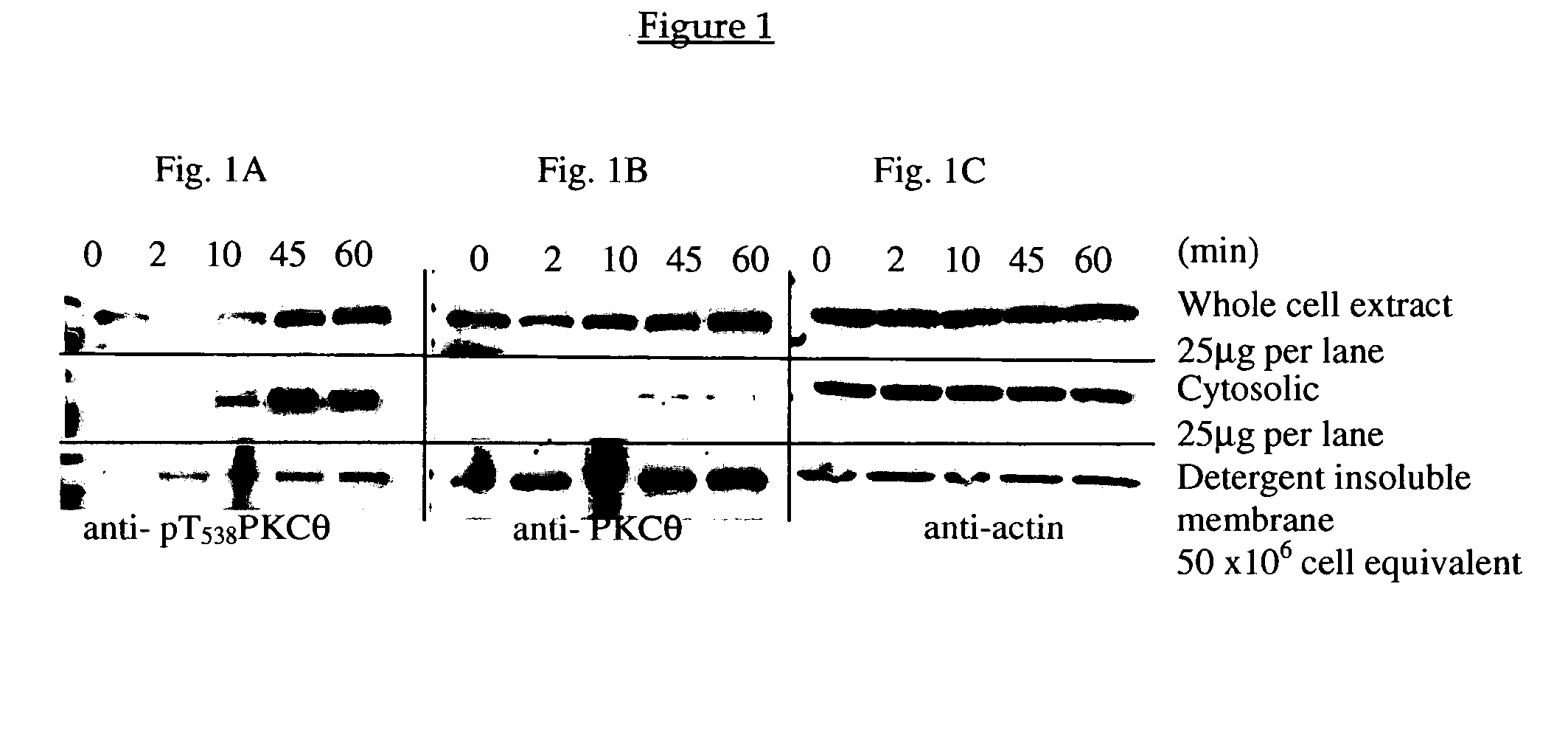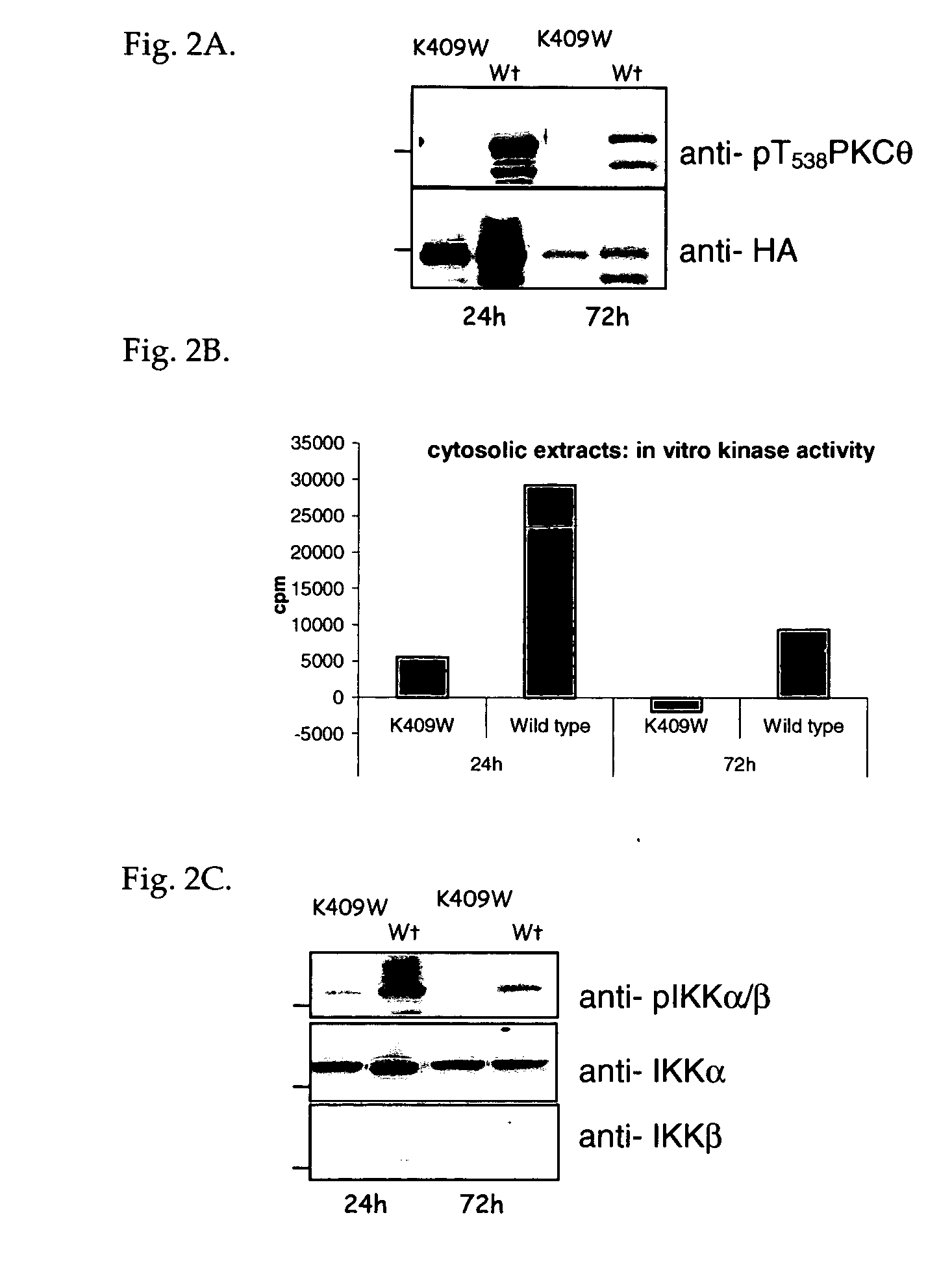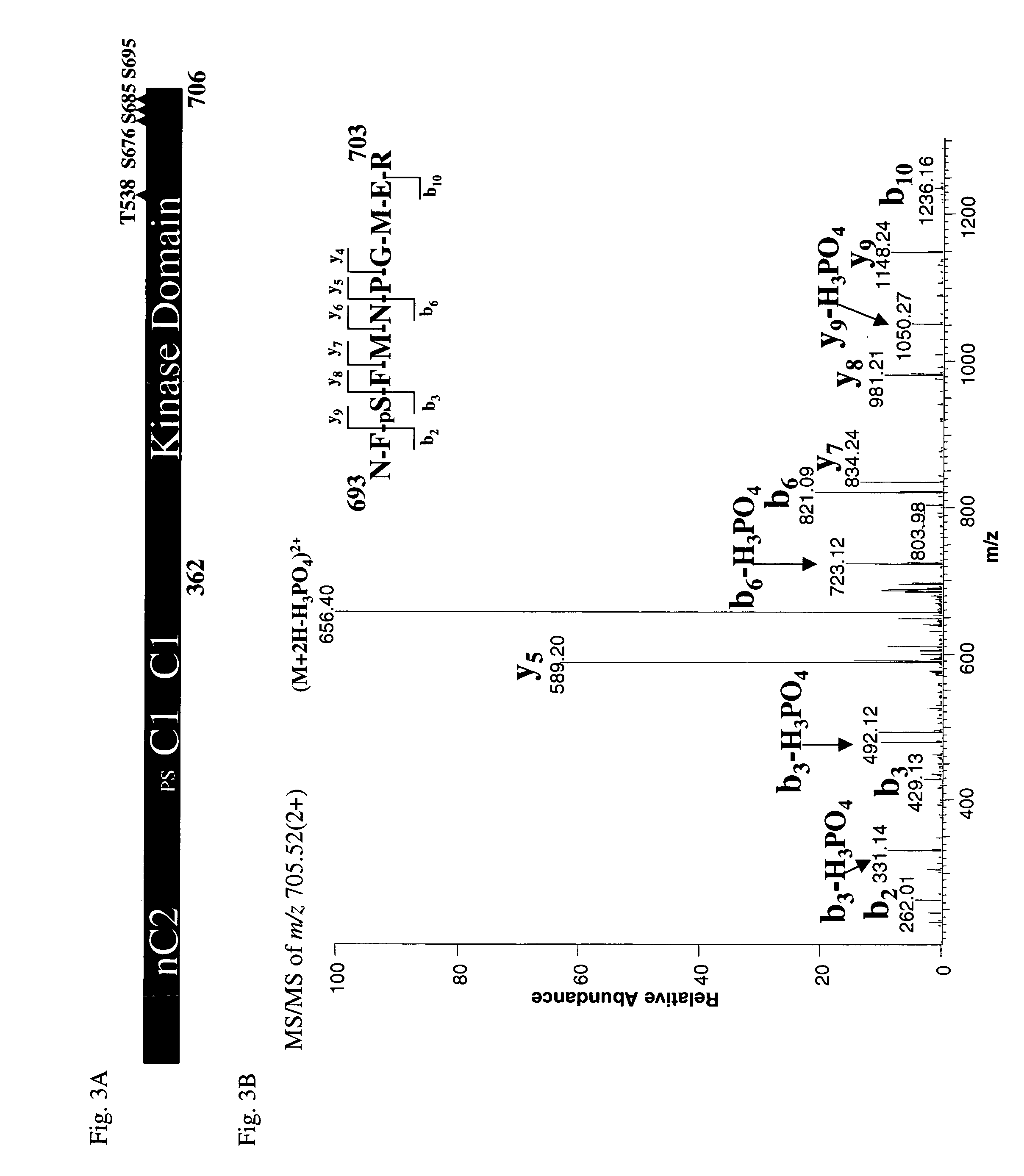Methods of treating asthma
a technology for asthma and asthma treatment, applied in the field of asthma and asthma treatment methods, can solve the problems of asthma patients' asthma asthma being frequently sensitive and inflamed, phlegm and other clinical manifestations of allergy, and reducing the kinase activity of the pkc- protein. , the effect of increasing the kinase activity
- Summary
- Abstract
- Description
- Claims
- Application Information
AI Technical Summary
Benefits of technology
Problems solved by technology
Method used
Image
Examples
example 1
PKC-θ Membrane Translocation and Activation Loop Phosphorylation upon TCR Co-Stimulation of Human T Cells
[0141] PKC-θ null (i.e., PKC-θ knockout) mice are viable, but mature T-cells are defective in proliferation, IL-2 production and activation of NF-KB (Sun et al., Nature 404: 402-407 (2000)). In human cultured mast cells (HCMC) it has been demonstrated that PKC kinase activity rapidly (BBRC 3: 895-900 (1999)). Because PKC-θ plays a central role in TCR-mediated signaling and has a demonstrated effect in RBL-2H3 cells, a rat basophilic leukemia line (Liu et al., J. Leukocyte Biol. 69: 831-840 (2001)), the activation and function of PKC-θ in BMMC, peritoneal mast cells, and T cells was examined.
[0142] Following TCR stimulation, PKC-θ is rapidly translocated to the central region of the supramolecular activation complex where it remains for up to four hours (Huang et al., Proc. Natl. Acad. Sci. USA 99: 9369-9373 (2002)). To determine whether this translocation corresponded to a chan...
example 2
PKC-θ Activation Loop Autophosphorylation is Required for Kinase Activity
[0148] As described in Example 1, PKC-θ membrane translocation corresponded with a concomitant inducible phosphorylation of the activation loop of the kinase on amino acid residue threonine 538 upon T cell receptor co-stimulation of human T cells. This activation loop phosphorylation has been reported as being required for kinase function (Liu et al., Biochemical Journal, 2002, 361-255-265). To confirm this report, a PKC-θ full length cDNA was subcloned with a C-terminal hemagglutinin (HA) epitope tag into the plasmid pcDNA3 (commercially available from Invitrogen), creating a C-terminal HA epitope tagged full length (WT) PKC-θ (nucleotide sequence SEQ ID NO: 11; amino acid sequence SEQ ID NO: 12). An HA-tagged kinase-dead PKC-θ was also generated by mutating the lysine at amino acid position 409 to tryptophan. This kinase-dead K409W mutation was generated by subcloning PCR products and confirmed by sequencing...
example 3
Mechanism of Catalysis of PKC-θ Kinase Domain
[0153] Studies were next performed to elucidate the mechanism of catalysis of the novel phosphorylated PKC-θ kinase domain (PKC-θ KD). To do this, catalytically active PKC-θ KD was expressed and purified for analysis of the phosphorylation sites. For these studies, the kinase domain of PKC-θ (PKC-θ KD; amino acid residues 362 to 706) was first expressed and purified. To do this, PKC-θ KD (amino acid residues 362 to 706) was cloned into a pET16b expression vector, introducing a hexa-histidine tag to the C-terminus. The amino acid sequence of the his-tagged PKC-θ KD is provided in SEQ ID NO: 63 (note that the N-terminal methionine and glycine residues in SEQ ID NO: 63 do not occur in full length PKC-0). The plasmid was used to transform E. coli strain BL21-DE3 for overexpression. A 10-liter cell culture at 37° C. of an optical density of 0.4, was induced with 0.1 mM IPTG at 25° C. for 3 hours before they were harvested and resuspended in b...
PUM
| Property | Measurement | Unit |
|---|---|---|
| Length | aaaaa | aaaaa |
Abstract
Description
Claims
Application Information
 Login to View More
Login to View More - R&D
- Intellectual Property
- Life Sciences
- Materials
- Tech Scout
- Unparalleled Data Quality
- Higher Quality Content
- 60% Fewer Hallucinations
Browse by: Latest US Patents, China's latest patents, Technical Efficacy Thesaurus, Application Domain, Technology Topic, Popular Technical Reports.
© 2025 PatSnap. All rights reserved.Legal|Privacy policy|Modern Slavery Act Transparency Statement|Sitemap|About US| Contact US: help@patsnap.com



